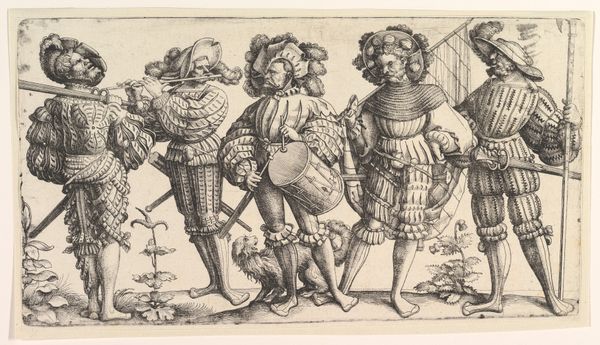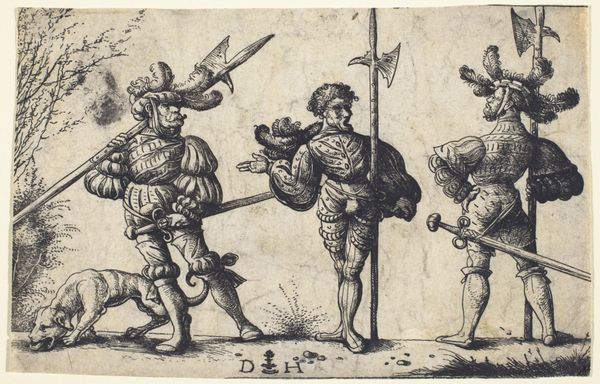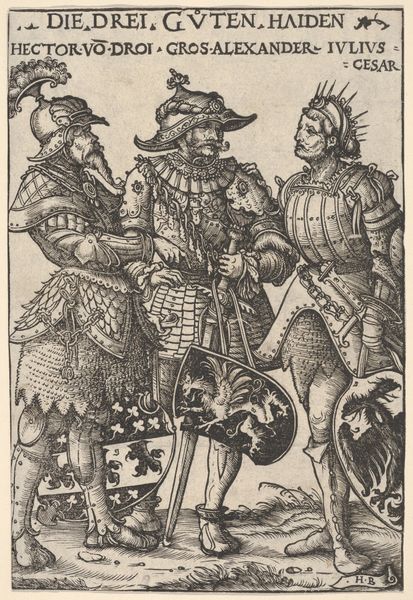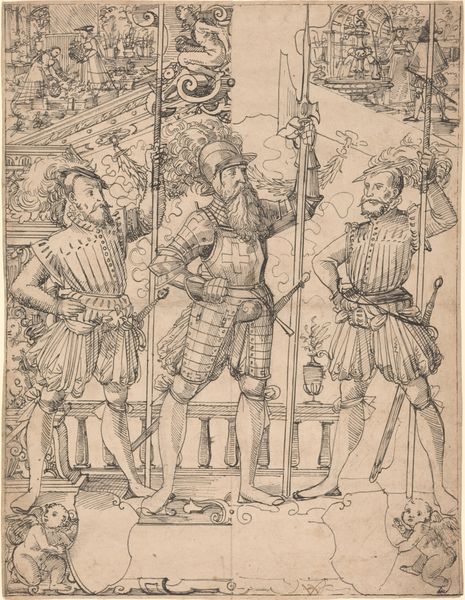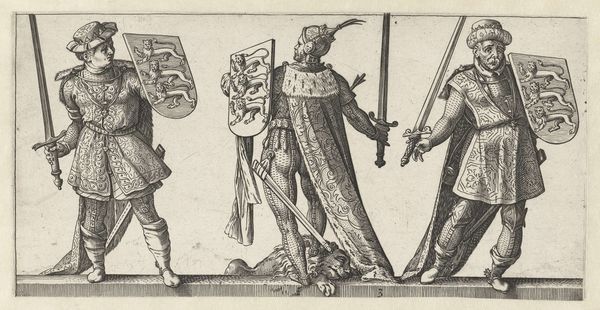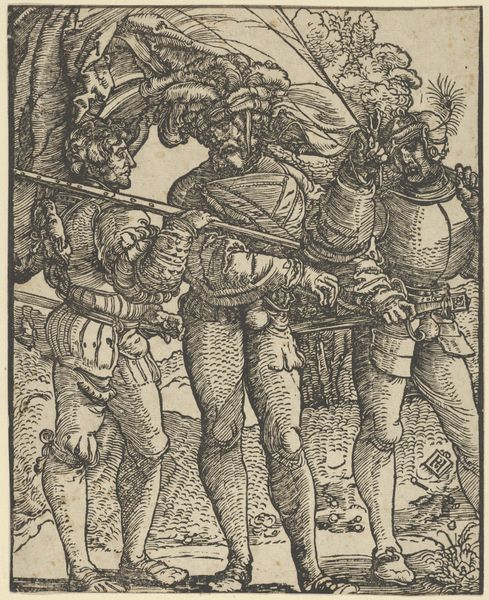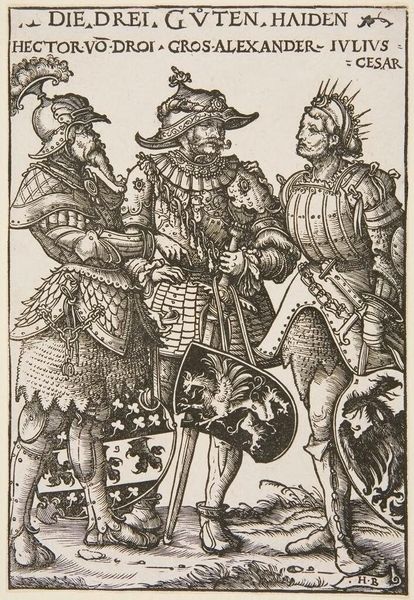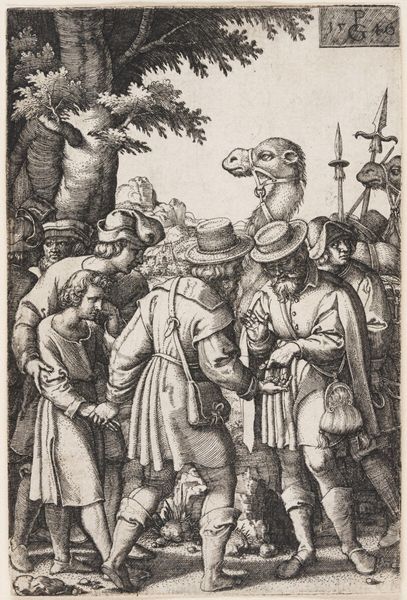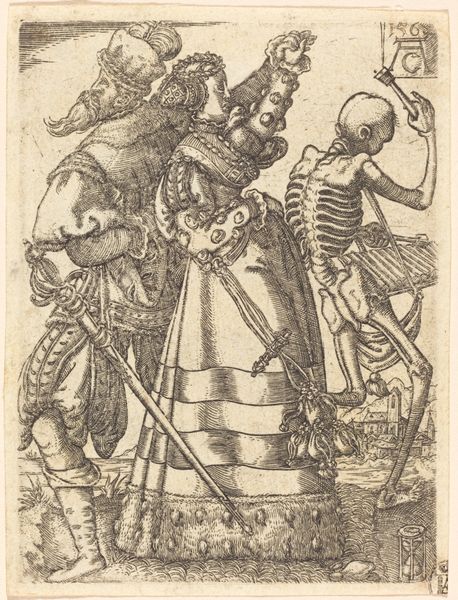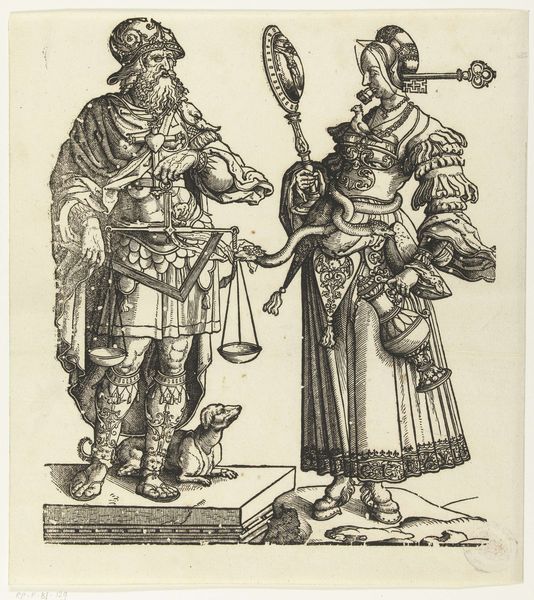
drawing, print, etching, ink, engraving
#
portrait
#
drawing
# print
#
etching
#
11_renaissance
#
ink
#
plant
#
soldier
#
history-painting
#
engraving
#
sword
Dimensions: sheet: 7 7/8 x 11 1/8 in. (20 x 28.3 cm)
Copyright: Public Domain
Curator: Here we have Daniel Hopfer's "Three German Soldiers," a print made sometime between 1480 and 1536, currently residing at the Metropolitan Museum. What do you make of these figures, clad as they are? Editor: Well, they certainly are… elaborate. Almost ridiculously so. The level of detail in the rendering of their clothing and armor is intense. And the postures are fascinating, almost theatrical. Curator: Exactly! Hopfer used etching and engraving, techniques that allowed for incredibly fine lines. This enabled him to depict not just the textures of the metal and fabric, but the *social* fabric, you might say. He’s showing off the pinnacle of Renaissance armor production here. Notice the foliage around their feet as well, almost competing with the men for attention. Editor: The way they're positioned – nearly shoulder-to-shoulder – brings to mind questions about labor and workshops. One can’t help but wonder about the workshops that churned out these intricate suits of armor, and Hopfer’s own in connection with the distribution of printed imagery at the time. I imagine those floral decorations might have had origins on the garments these gentlemen adorned, or perhaps were purely for decoration here. Curator: Precisely, that's the curious tension Hopfer captures – a glorification of military might offset by a clear fascination with material culture, almost consumerism. The flowers feel defiant almost—spring bursting from war. There is humor as well. These don't read as menacing figures, but almost like peacocks. Editor: Right, almost caricatures! Which makes me consider his social commentary; if Hopfer isn’t critiquing power but fixating on wealth as adornment, where does his actual focus lie? Does he celebrate craft and the social standing it bought to artisans, or poke fun at social class? It almost begs you to examine class tension, even. Curator: I like that read of it. Looking at this, I get the sense that for Hopfer, the art was as much about showcasing the *making* as it was about depicting any military event. It becomes a celebration of German craftsmanship and material excess simultaneously. Editor: Definitely a curious creation. Thank you, that’s a different perspective to keep in mind. Curator: A material world indeed! It makes one think twice about art and the art of war itself.
Comments
No comments
Be the first to comment and join the conversation on the ultimate creative platform.
